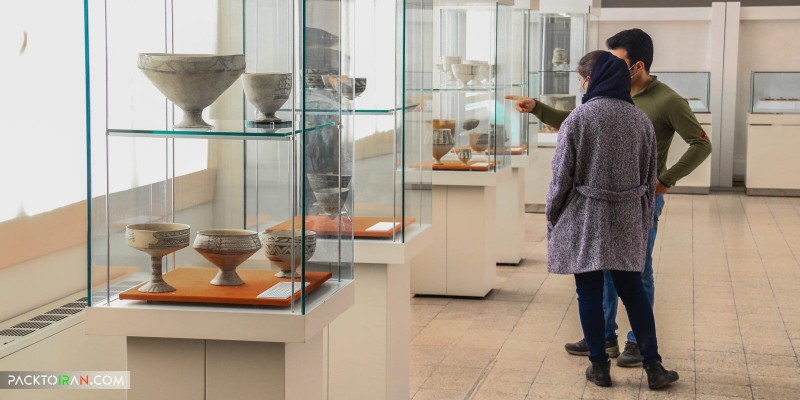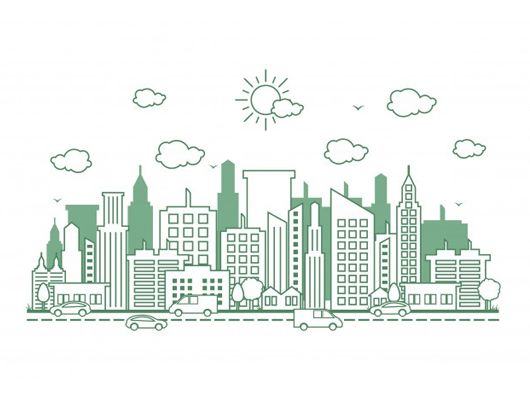Niavaran Palace Complex: Introduction
Niavaran Palace is one of the most significant and famous attractions of Tehran located in the Shemiranat region, in the north of the city, that is a lush region with old gardens and villas, cool fresh weather, and a quiet atmosphere compared with the chaotic downtown Tehran. This palace was one of the royal palaces resided by the last king of Iran Mohammad Reza Pahlavi and his family as their summer palace before the Iranian revolution in 1979. After the revolution this palace was renovated and used as a public museum. The Niavaran Palace is a part of the historical-cultural Niavaran Palace which was as a part of the Sa’ad Abad Complex until 1999 and it was managed as a separate palace. With its amazing architecture, aged plane trees of the atmospheric garden, and fresh weather Niavaran Palace is a must-see in Tehran.
The History of Niavaran Palace Complex
The Niavaran Palace was constructed during the Pahlavi Dynasty (1925 to 1979) as the family’s summer villa, however before the construction of the mansion this garden was used as a recreational area by the Qajarid kings and governors who ruled Iran from 1789 to 1925. During that era, the Shemiranat region was not a part of the Tehran city and was a small village, which was chose by Fath-Ali Shah (the Qajar king) as a lush place for building summer garden and palace out of the city. After Fath-Ali Shah, other Qajar kings also managed to build their own private palaces in this vast garden. Muhammad Shah Qajar built a small yet luxurious mansion, and then Naser al Din Shah constructed a palace named Saheb Gharanieh. The last mansion built in this garden during the Qajar era was the Ahmad Shah Mansion.
This complex remained untouched until the kingdom of Mohammad Reza Pahlavi when he ruined the Qajarid palace of Fath-Ali Shah and built his own new palace and named it the Niavaran Palace. At first, the palace was designed to be used for hosting foreign guests and ambassadors, but after the construction was completed the king and his family decided to use it as their own private palace.
Today the Niavaran Palace Complex consists of the royal Niavaran Palace, the Saheb Gharanieh Palace, the Ahmad Shahi Mansion, Jahan Nama Museum, the library, the museum of cars, and the garden. After the Iranian revolution different palaces of the complex got opened for public visit little by little. The Niavaran Palace was closed on 2004 for renovations and it got opened on 2010 when it got equipped with lift, new furniture, curtains, closed-circuit camera, etc.
The Architecture of Niavaran Palace
The Niavaran Palace has a simple yet modern and unique architectural design. This is a two and a half story building which is 9000 square meters with a movable ceiling. This construction was designed by Muhammad Foroughi the great contemporary Iranian architect, the stuccoworks are done by Mr. Abdullahi, and the mirror works are the masterpiece of Mr. Ali Asghar. The traditional Iranian ornaments and the modern design of the palace shows a smart combination of Iranian and European architecture.
First floor
The first floor includes the hosting hall which is decorated by fancy furniture designed by artists from Germany and France, antique ceramics and potteries, hand-woven fine Persian carpets, and precious paintings from international artists. The harmony of the colors and the ornaments in this hall is amazing. There is also a cinema hall in this floor which is 400 meters in square and is today open for public use.
Second half-floor
This part of the Niavaran palace includes the private room of Leila Pahlavi the daughter of Muhammad Reza Shah, and the private office of Farah Pahlavi (the queen) and the collection of the army uniforms of the king. On this floor, visitors can visit precious masterpieces like small ivory statues from India, and paintings from Qajarid Era.
Second floor
The private rooms and the bedroom of the king and the queen, and also the study rooms are located on this floor. The collection of Farah Pahlavi stunning dresses which are decorated with Baluch embroideries. A desk related to Louis XVI era is one of the significant objects on the second floor.
The Museum of Private Cars
This Museum is located on the northwest side of the Niavaran Complex and is a 200-meter area where the private cars and motorcycles of the king Muhammad Reza and his sons are kept. This museum is not a professional car museum and is a garage for keeping the royal cars.
Garden Museum of Inscriptions
The garden museum of inscriptions is one of the interesting sections of the complex and is a collection of 43 ancient inscriptions related to different eras from the Medes, Assyrians, Ilamites, and Sassanids. The most important inscriptions include the epigraph of Shapur and Arta xerxes related to the Naqsh-e Rostam and the epigraph of Shapur I from Naqsh-e Rajab.







